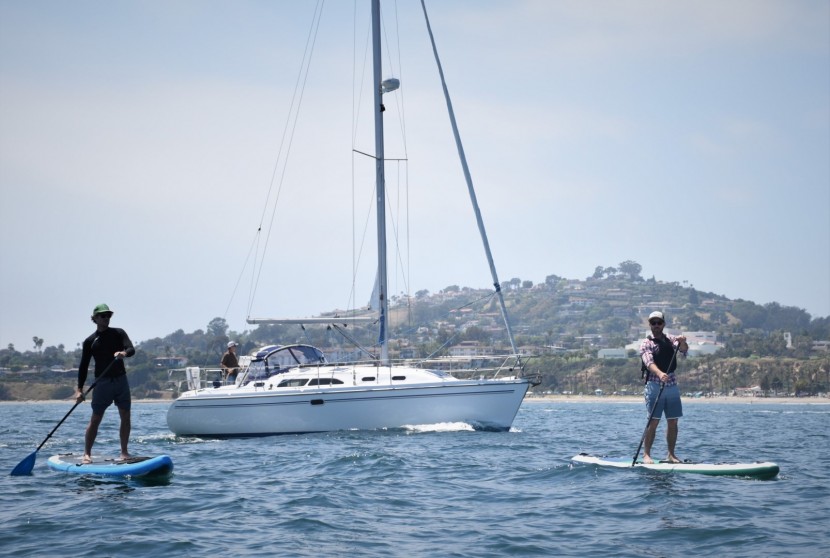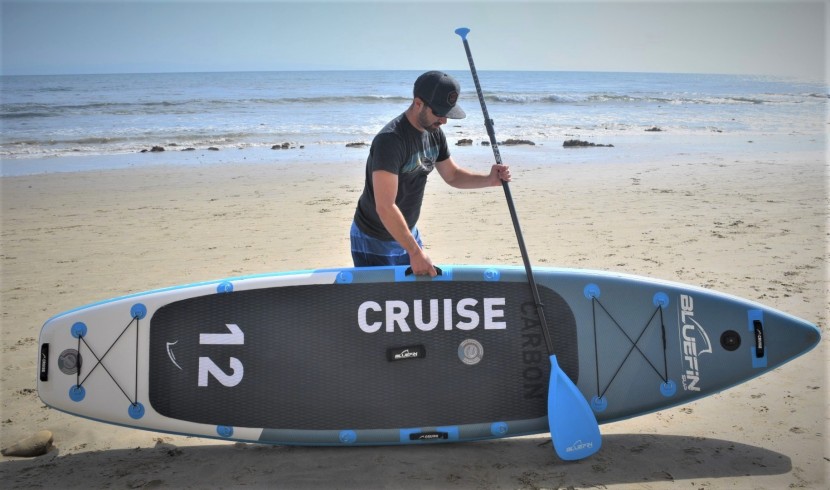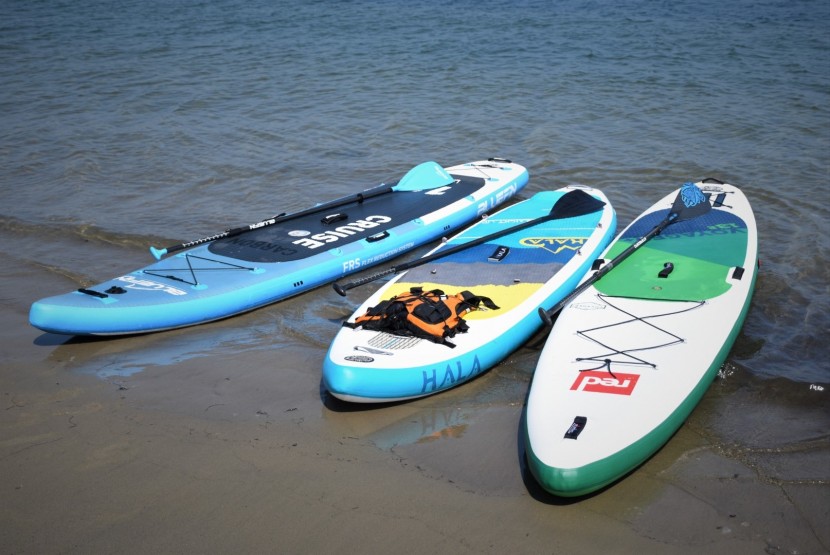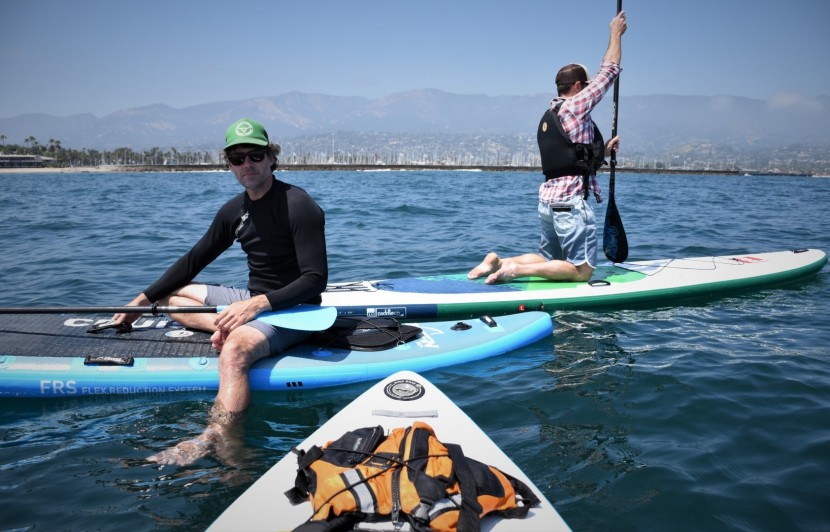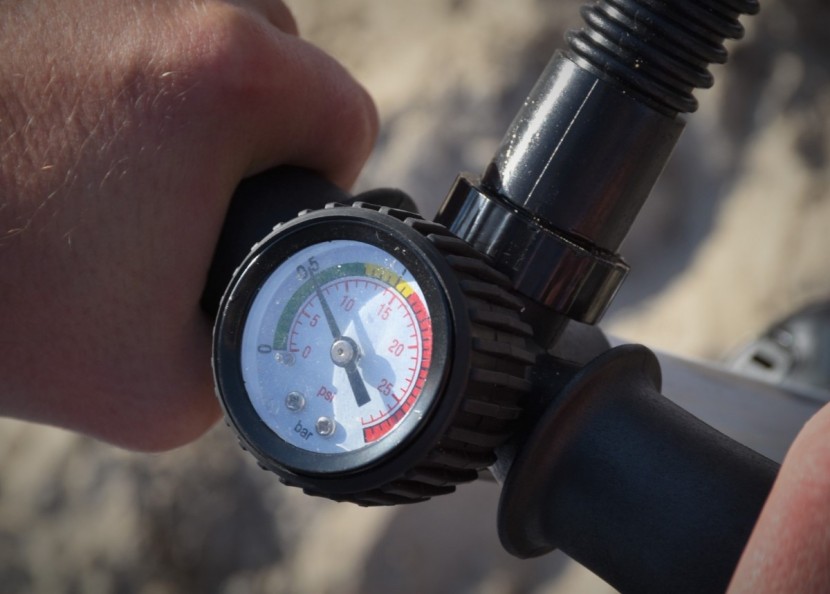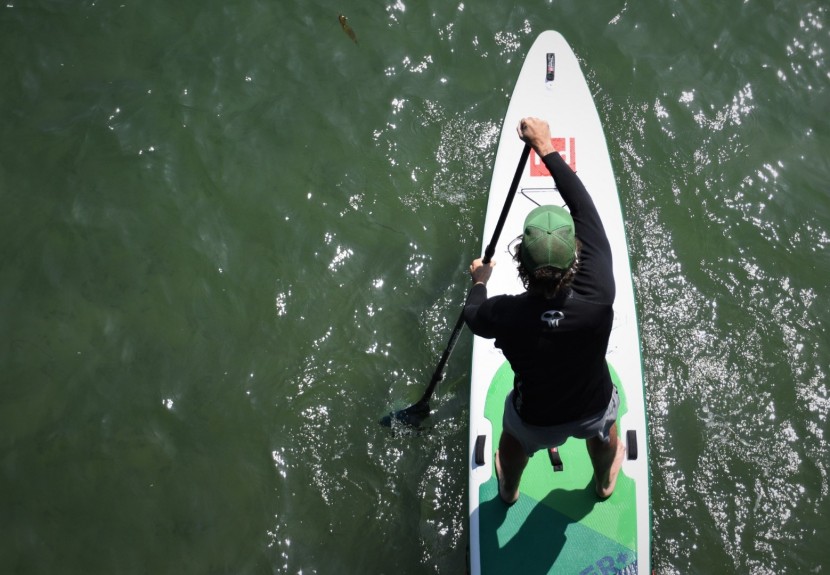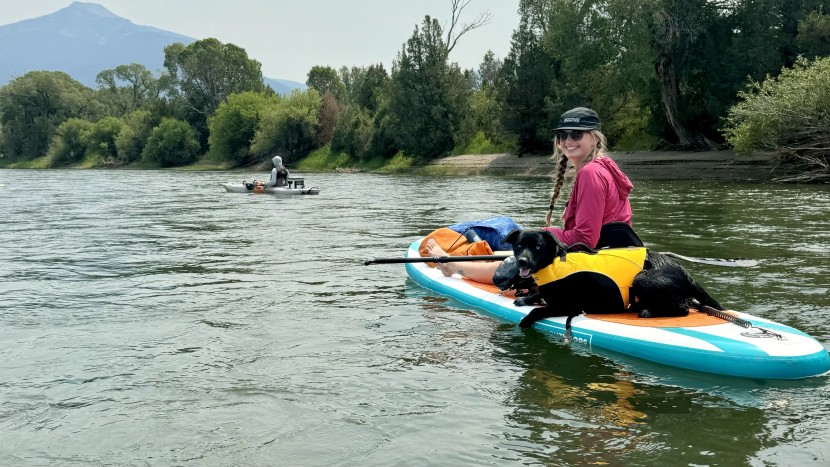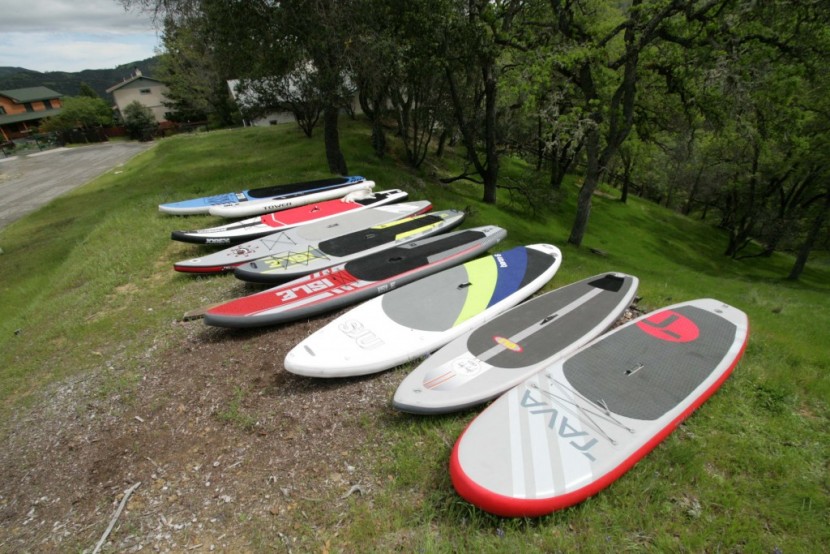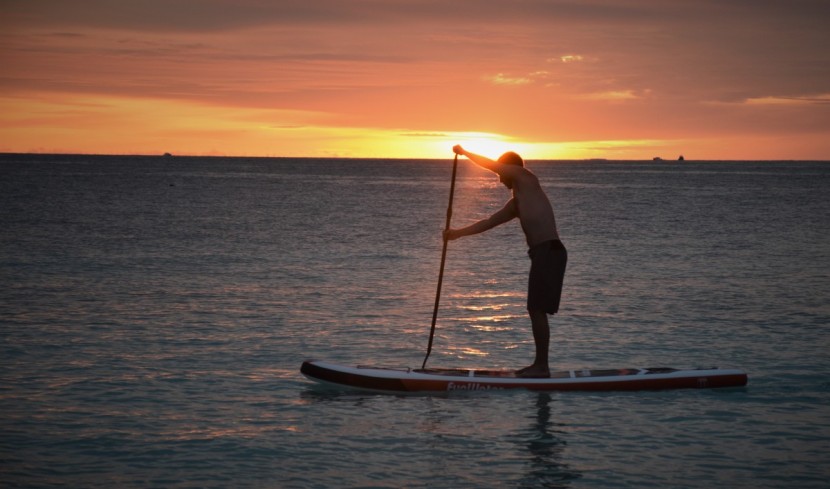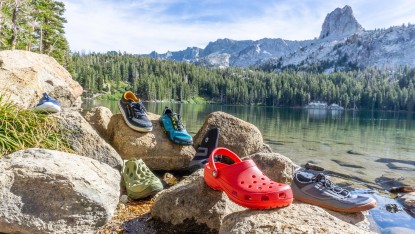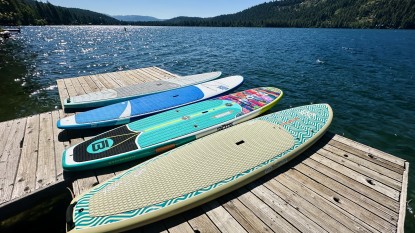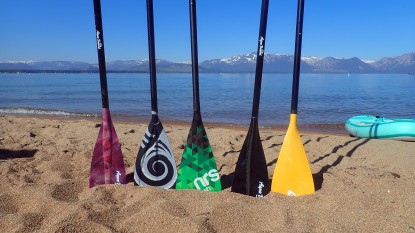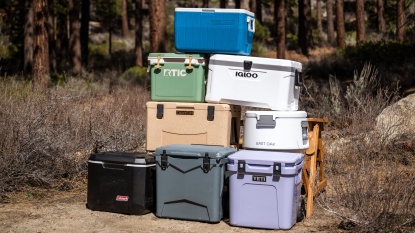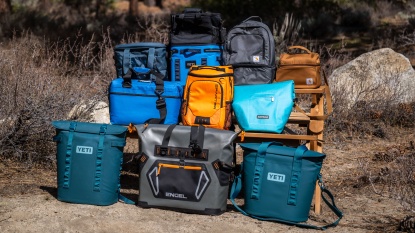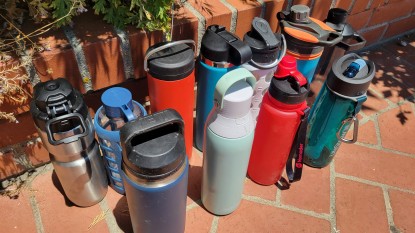Selecting the Right Product
Today's stand up paddle board marketplace is full of catchy acronyms and confusing terminology, so we'll start by explaining some of the common lingo. SUP is a regularly used acronym for Stand Up Paddle Board, and is also often shorted to simply paddle board.
Paddle Board is a more broadly used term and could also refer to a longboard used for prone paddling across flat water, which is also commonly called prone paddle boarding. In this paddling discipline, you kneel or lie on your stomach and paddle with just your arms. It's not the most comfortable position, so it's a sport with limited participation and is often used by surfers as fitness training. This review considers stand up paddle boards and does not include boards specifically designed for prone paddling.
Do You Want a Rigid or Inflatable SUP?
There are two distinct classes of SUPs, including more traditional rigid fiberglass boards and the more recently introduced inflatable models. Inflatable boards are typically constructed from 1-2 layers of PVC (polyvinyl chloride) connected by internal nylon stitches. Some of today's most advanced models include sheets of carbon fiber encased within the PVC layers along the top or bottom or side rails of the board for extra rigidity. The body material is flexible enough for the board to collapse and be rolled up when deflated, yet durable enough to sustain the high pressure necessary to provide a firm riding platform when fully inflated.
Traditional rigid boards typically consist of an EPS (expanded polystyrene) foam core surrounded by fiberglass and epoxy. Some inexpensive models are made of plastic, but these products typically suffer when it comes to performance. Some higher-performance models are constructed with carbon fiber and typically have premium price tags to go along with their premium construction and performance.
Choosing between a rigid and inflatable board depends on your paddling priorities. Rigid boards typically outperform their inflatable siblings, especially when it comes to glide and stability in choppier conditions. Serious advancements in inflatable technology, however, have made many of the top inflatable models nearly as high performing as traditional rigid boards, but with the added advantage of easier portability and storage. The performance of today's inflatable boards will be sufficient for most recreational paddlers, although rigid models do still typically perform better and sometimes come with a lower price tag. Serious paddlers or competitive SUP racers will still prefer the performance of a traditional fiberglass or rigid carbon fiber board.
Advantages of Inflatable SUPs
- Portability — When deflated and rolled up, most inflatable paddle boards are the size of a large duffel bag and can fit in pretty much any car. Most other rigid SUPs require a roof rack and tie-down straps and can be a challenge to get on and off the roof, especially if they are particularly heavy or awkwardly shaped. An inflatable SUP deflates quickly, rolls up easily, and takes minimal effort to lift and place into a trunk. It's also more comfortable to travel longer distances without worrying about the board's security on top of your vehicle. Flying with an inflatable board is significantly easier as well and will either be free or typically cost between $50-$100. Flying with a non-inflatable board generally starts at $100 if it is shorter than 9 feet, 6 inches, and goes up from there, and of course, will be more of a challenge to transport to and through the airport.
- Durability — Inflatable paddle boards are typically made of heavy-duty PVC. During testing, we bumped and scraped the boards over rocks, logs, and asphalt, and none of the models we've tested have ever leaked or popped. Most other rigid fiberglass paddle boards easily pick up chips or dings and generally have to be handled more carefully. Inflatable boards are usually the only option for most rivers because running into or paddling over rocks in low water spots is quite common and will likely damage other types of boards.
- Softer Surface — Falling while paddling and landing on the board is a common experience when learning or when paddling in rough waters. The soft, flexible surface of an inflatable SUP means it's less likely for someone to bang up their head, face, elbows, or knees while paddling, surfing, or just splashing around.
- Easy storage — Inflatable paddle boards are appealing because they are easy to transport, don't require roof racks, and don't take much room to store. Most inflatable boards easily roll up pretty small, which makes them much more convenient to store indoors. If you live in an apartment without a garage or somewhere where you do not have much storage, this factor makes them quite appealing.
Disadvantages of Inflatable SUPs
- Not as fast — Even the most efficiently designed inflatable paddle boards are typically still too wide and too flexible to cut through the water as efficiently as a stiffer, more streamlined rigid board. The fiberglass material used on most rigid boards also provides a smoother, more slippery surface than the PVC used on most inflatable boards. To get the best glide performance and fastest paddling speeds, see our rigid board lineup in our paddle board review.
- Inflation time and effort — Be prepared to put in some serious work to get your board up to the typically recommended 15 psi pressure. It's definitely a great workout unless you buy a specialized aftermarket electric pump. The usual 5-20 minute inflation time varies depending on the board but also on a person's strength and endurance. When the boards reach partial inflation, usually around 9-10 psi, they become more challenging to pump up, but it's worth the effort to get them up to the recommended pressure of 12-15 psi. More and more boards are now coming with a dual-action pump that can be adjusted when the board is closer to full inflation, making it easier to continue to pump.
Keep in mind that some boards come with pumps with what we like to call “universal” inflation hose attachment ends, which means that they are interchangeable with most other boards. Some pumps have a proprietary hose attachment end, which means it will only work for that particular board. A few have an alternative attachment side for use during deflation so you can get the board as flat as possible before rolling it up.
Choosing an Inflatable Paddle Board
When you're shopping for an inflatable paddle board, keep in mind:
- How often you will paddle — If you are going to use your board several times a week and need to store it compactly between adventures, make sure to purchase a board that is easy to inflate, deflate, and transport, and has fins that are easy to install and remove. Smaller and lighter boards with less overall volume are typically easier to inflate and transport.
- Where you will paddle most often — If your choice of adventuring is river touring or landing onshore often, you will want a nice handle on the nose of the board. A handle makes pulling the board ashore much easier than a D-ring or grabbing further in via a cargo system or middle carrying handle. The best products in our lineup have several comfortable grab handles, typically found in the middle, at the front and back, and at the sides of the board.
- What cargo will you bring — If you are going to bring a lot of extra gear with you when you paddle, make sure that your board has a sufficient cargo system for your needs. The higher-performing models in our test typically have several D-rings and multiple bungee cargo systems. These features usually come at a higher cost.
- What type of Paddler are You — The duration and type of activities you do while out on the water are important considerations. For long paddles and Yoga practitioners, consider the top of the board, including deck pad and handles. A softer, less textured surface is more comfortable for hands and feet. Yoga practitioners and those who like to lay on their boards will also appreciate a low-profile handle and full deck pad. If you prefer to sit or lounge on your board you might consider a board that converts to be more like a kayak.
Stand Up Paddle Board Styles
There are several different styles of both rigid and inflatable SUPS. Here we break down the category into four main styles.
Race or Touring Board
— These boards are typically longer (12 feet to -14 feet+), narrower (less than 28 inches wide), and with a displacement hull (v-shaped) that makes them very fast. They are usually not very stable and therefore are not recommended for beginners. These are for intermediate and advanced riders who want to get across the water as fast as possible. Prices normally start around $1000 and go way, way up, depending on the materials and design features.According to some longtime paddlers, more people should invest in a touring board to enjoy the fasters speeds and longer ranges that they provide. Cruising along at a good clip of speed is a satisfying experience.
Flat Water Recreation Board
— These are general boards ideal for all-around use. They are typically wide, stable, and 10-12 feet in length. They are usually stable in choppy water because of their width and thickness, are not particularly fast compared to racing or touring boards, but can be fun for various paddling activities, including Yoga and fishing. Prices are usually anywhere from $300-1200.Surfing Paddle Board
— This is a surfboard on steroids. It has the shape of a shortboard or longboard but is much thicker, wider, and usually longer. The rails are narrow to be able to cut into the wave face. Prices are typically $800-1500.Convertible boards include options to attach a seat and a paddle to a kayak-type set-up. Some come with an attachable footrest for additional comfort and power while paddling. If you like the option of being able to stand up or sit and paddle, these are an option that provides access to both styles.
Key SUP Design Components
Whether selecting an inflatable model or a rigid board, the first thing to consider should be its dimensions.
- Width - Generally, the wider the board, the more stable it is. Wider boards are also slower, so racers generally have narrow boards (the back is narrower than 28 inches), while beginners typically benefit from a board that is 31 inches or wider.
- Length - If you are looking for speed, long and narrow wins the race, but longer boards are also hard to turn. SUP surfers usually use 8-10 foot boards, while racers use 12-16 foot boards. A good size for most beginning and intermediate paddlers is in the 10 to 12-foot range.
- Thickness - Thickness relates to how well a board floats, and it has a special importance when it comes to inflatable boards. As a general rule, if an inflatable paddle board is less than six inches thick, it feels like you're standing on Jell-O.
- Nose Rocker - Nose rocker is how far the front of the board curves up. It's an important metric if you are surfing; too little rocker and the board wants to submerge its nose like a submarine. Nose rocker is also helpful to improve the maneuverability of a board.
- Hull shape - Race boards have a displacement hull similar to the bottom of a kayak or sailboat. Most other boards have a flat bottom similar to the bottom of a barge. A flat bottom makes the board more stable and easier to turn, while a displacement hull has a more pointed nose which enables it to slice through the water more efficiently. Displacement hulls make for faster boards that are good for going long distances or for racing, but they are not as stable or maneuverable as a flat bottom board. A flat bottom board is more rounded on the nose and usually wider than a board with a displacement hull, making them better for beginners or all-around paddling.
- Rails - Rails are the sides of a paddle board. They are important if you are surfing and you need to carve into the face of the wave, and they can impact the board's rigidity. Some modern inflatable board designs have carbon-reinforced side rails to add stiffness and rigidity to the board, which helps its stability and glide performance.
Conclusion
Today's SUP marketplace has a bunch of intriguing options available with both inflatable and rigid options, all with very different sizes, shapes, and performance capabilities. Once you decide what kind of paddling you want to do and what your design and performance priorities are, you can begin to narrow down the options and hone in on the best board for your particular paddling goals. Whether you're looking to try paddling for the first time, start experimenting with surfing or racing, or just want to have fun out on the water, we hope this was a useful guide to help you understand your options and find the right board for you.


